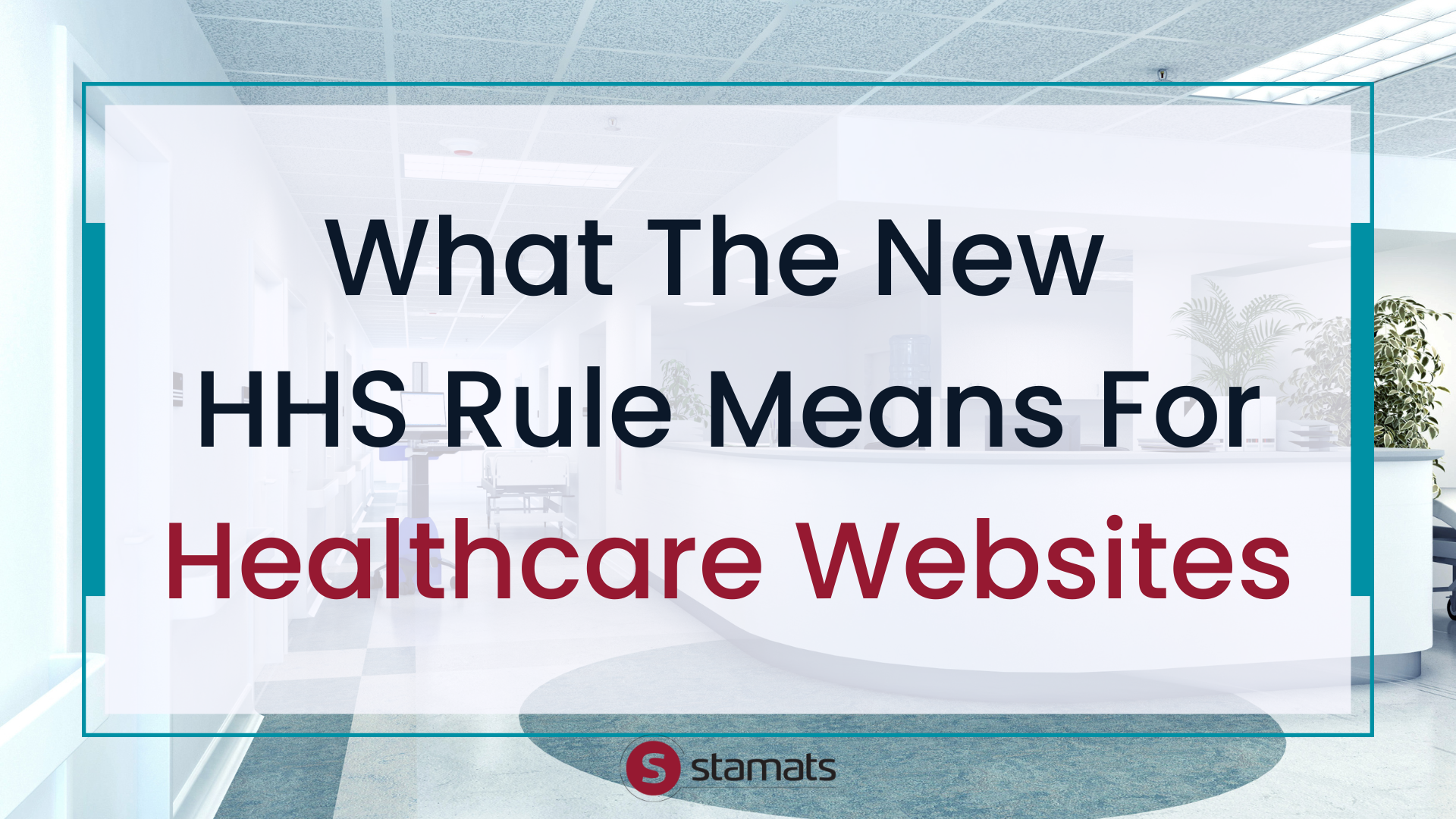
Kelly Hidlebaugh
June 25, 2025

In May 2024, the U.S. Department of Health and Human Services (HHS) finalized a landmark update to Section 504 of the Rehabilitation Act. The new rule requires all federally funded healthcare providers to make their digital content accessible. This means websites, mobile apps, and even kiosks must meet the Web Content Accessibility Guidelines (WCAG) 2.1 Level AA by May 2026.
For healthcare marketers, this is more than a compliance checkbox. It’s a chance to build trust, improve patient experience, and lead in digital inclusion.
Stamats, a digital partner to hospitals and healthcare systems across the U.S., is helping organizations move confidently toward WCAG 2.1 AA — and beyond.
Accessibility isn’t just about avoiding lawsuits. It’s about making sure every patient can access care with dignity and independence.
You might already be familiar with Section 508, which outlines content accessibility standards for all federal agencies. The Section 504 rule extends those mandates to any healthcare provider receiving federal funds. This includes hospitals, clinics, and provider groups.
Here’s what’s covered in the rule update:
The Section 504 changes do more than upgrade accessibility for new platforms and devices; it gives teeth to digital accessibility. HHS’s Office for Civil Rights can now investigate complaints and enforce compliance. The agency can conduct a compliance review without a complaint, and it can refer violations to the Department of Justice if needed.
In addition to legal consequences, violations may lead to HHS suspending or terminating federal funding to your institution. This includes Medicare and Medicaid reimbursements, as well as research and community outreach grants.
View full rule details on the HHS website.
This rule is a game-changer for healthcare. It’s the first time digital accessibility is enforceable under Section 504.
WCAG 2.1 AA is the gold standard for digital accessibility. These simple features ensure that patients using screen readers, voice control, or keyboard-only navigation can access your content:
These accessibility rules are based on decades of user research. The user experience professionals who develop the WCAG standards apply four key concepts to their recommendations:
Healthcare websites often have many hidden barriers that limit accessibility. Some of the most common (and easily fixable) stumbling blocks we see in our site audits include:
It’s also vital to remember that third-party tools are covered by the new rule as well. If your patient portal or telehealth provider is inaccessible, your organization is still liable.
Outsourcing doesn’t outsource responsibility. If it’s part of your patient experience, it must be accessible.
While WCAG 2.1 AA is the legal requirement, WCAG 2.2 AA, released in October 2023, adds important enhancements:
HHS allows “equivalent or better” standards, so adopting WCAG 2.2 AA is not only allowed, but encouraged.
Related reading: 4 PDF Accessibility Tips
Rather than fix for WCAG 2.1 now and retrofit later, it makes sense to align with 2.2 from the start. You’ll minimize rework, future-proof your content, and improve UX for everyone.
If you manage a healthcare website, interpreting and implementing the new requirements might feel daunting. The experts at Stamats can help your organization break down the process into manageable steps.
Here’s a 4-step roadmap to help you get started:
You might be wondering if AI tools can make the road to compliance easier. While AI might help you streamline your processes, it can’t evaluate tone, context, or navigational logic. For example, an alt-text generator may correctly label an image as “doctor” but miss that the image is promoting a women’s health event. Stamats strongly recommends combining automation with expert review and user testing.
Remember: Accessibility can be more than just a compliance task. It’s an opportunity to improve your digital experiences to meet strategic goals.
Related reading: HMPS 2025 Recap: Storytelling & Connections Lift the Patient Experience
Accessibility isn’t a one-time fix. It’s a mindset. It needs to be part of your content strategy, your design system, and your brand.
As you craft your compliance plans and present your roadmap to stakeholders, keep in mind that WCAG 2.1 AA is the floor, and WCAG 2.2 AA is the future. The changes you make now will support not just mobile devices, but aging populations and patients with temporary impairments as well. A comprehensive accessibility upgrade is a long-term investment that positions your brand as modern, patient-centric, and committed to eliminating barriers to healthcare.
Just ask any content expert at Stamats about the importance of this competitive edge. Our work in higher ed and healthcare has shown us that the best digital experiences are born when inclusion is part of the foundation, not an afterthought.
Start with a readiness audit, and Stamats will help you build from there.